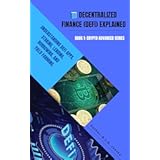Mastering the 0.1 to 10 Bitcoin Trading Challenge: Day One Insights
Embarking on a journey to transform a modest sum into significant capital through cryptocurrency trading is an aspiration for many in the digital asset space. The video above introduces an ambitious endeavor: the 0.1 to 10 Bitcoin Trading Challenge on BitMEX. This challenge aims to replicate a previous success, striving for a remarkable 10,000% increase in capital, beginning with just 0.1 XBT.
For those new to the high-stakes world of leveraged crypto trading, such challenges offer a fascinating glimpse into the strategies employed by experienced traders. It’s a testament to the potential, and inherent risks, within the dynamic crypto markets. Understanding the foundational principles and strategic execution behind such a challenge can provide valuable insights for your own trading journey.
The Trading Challenge: From 0.1 to 10 Bitcoin
The core objective of this particular trading challenge is clear: starting with an initial balance of 0.1 Bitcoin (XBT) and aiming to reach 10 Bitcoin as quickly as possible. This represents an extraordinary target, pushing the boundaries of what is typically achievable in short-term trading. As shown in the video, Day One commenced with immediate success, yielding a 4.8% profit on the starting balance, elevating the account to 0.1048 XBT.
This early gain demonstrates the power of well-executed trades, even within a single day. The trader opted to focus on Ethereum (ETH) USD perpetual contracts instead of Bitcoin itself, a strategic decision driven by the observed market movement and volume. This highlights an important lesson for beginners: always seek liquidity and volatility where the opportunities are most apparent.
Understanding Ethereum USD Perpetual Contracts
When diving into the specifics of the trades, the video emphasizes using Ethereum USD perpetual contracts on BitMEX. For new traders, a “perpetual contract” might sound complex, but it’s essentially a type of futures contract without an expiry date. This means traders can hold their positions indefinitely, as long as they meet margin requirements. The “USD” component indicates that its value is tethered to the US Dollar, providing a stable reference point.
Trading perpetual contracts often involves “leverage,” which was utilized at 10x in these trades. Leverage allows traders to control a larger position with a smaller amount of capital. For example, with 10x leverage, every $1 of your capital can control $10 worth of the asset. While this amplifies potential profits, it equally magnifies potential losses. It’s a powerful tool that requires careful risk management, as even small price movements can significantly impact your account balance.
Technical Analysis in Action: Moving Averages and Price Action
A crucial element of the trading strategy discussed in the video revolves around technical analysis, specifically using moving averages. Moving averages are popular indicators that smooth out price data over a specific period, helping to identify trend direction. In the video, the trader refers to their “own special indicator” which comprises multiple moving averages. These lines on a chart act as dynamic support and resistance levels.
Here’s how these indicators were instrumental in the day’s successful trades:
- Identifying Trend Reversal: The trader observed the ETH price initially stuck below all three moving averages, indicating a downtrend or resistance. A cross back above these averages signaled a potential shift in momentum, prompting close observation.
- Entry Confirmation: The key to entry was a swift “wick back up” after a brief rejection from a moving average. This specific price action, coupled with the overall upward momentum, confirmed a bullish sentiment. The first entry was around the 114.25 to 114.45 ETH price range.
- Resistance-to-Support Flip: After the initial upward move, the moving averages that previously acted as resistance transformed into support. This common technical pattern means that price levels which once pushed the price down now act to hold it up. The price being held by these averages provided confidence for the second entry at an average of 115.60.
- Exit Strategy: Exiting trades is as critical as entering them. The first exit was a small profit around 115.85, securing a 2.3% gain on the account. The second exit occurred just before a significant “wick off” at 116.85, anticipating a reversal after the price moved “too parabolically” and entered the overbought region on the five-minute chart. This showcases the importance of observing momentum and recognizing when a move is becoming unsustainable.
These examples illustrate how combining multiple data points from technical indicators and price action can inform precise entry and exit decisions, particularly in high-frequency trading scenarios.
The Power of Liquidation Runs
An interesting concept discussed in the video is “liquidation runs.” In leveraged trading, if a trader’s position moves against them significantly, their broker (like BitMEX) will automatically close their position to prevent further losses, a process known as liquidation. These forced closures, especially of “short” positions (bets that the price will go down), can add buying pressure to the market, pushing the price even higher in what’s called a liquidation run.
The trader identified specific price points where such liquidations were likely to occur. For instance, after reaching certain highs, shorts were being liquidated, causing price pumps of 50 to 75 cents at a time. A key insight was predicting that if the price moved above 117.75 to 118, another wave of short liquidations would likely occur, potentially propelling Ethereum towards the 119 mark, which was identified as the next significant resistance level on the hourly chart. This demonstrates an advanced understanding of market mechanics and order flow.
Risk Management and Community Support
While the video showcases successful trades, it implicitly highlights good risk management practices. The trader mentions setting a maximum entry plan down to 112 and a stop-loss at 110. This predefined exit strategy is crucial for limiting potential losses, preventing small drawdowns from becoming account-crippling events. Position sizing was also controlled, with only about a sixth to a fifth of the total account used for the trades, further mitigating overall risk.
Beyond individual analysis, the value of community and expert guidance is stressed. The trader actively communicates with Patreon members and Discord users, sharing trade plans, updates, and charts. This collaborative approach can be immensely beneficial for traders of all levels, providing validation, diverse perspectives, and real-time insights that can improve decision-making. The Discord community, with its 141 users, offers both a free section for general discussion and a “donor room” for exclusive, first-hand trade ideas and precise entry/exit points.
Looking Ahead in the Bitcoin Trading Challenge
The 0.1 to 10 Bitcoin Trading Challenge is a marathon, not a sprint. While Day One brought a solid 4.8% profit, the video acknowledges that not every day will yield such consistent gains. Traders must prepare for the reality of varying daily returns, which could range from 20-30% profit days to negative 5-10% loss days. The journey towards a 10,000% increase is filled with volatility and requires resilience, continuous learning, and adaptability to market conditions.
By dissecting the strategies employed in these initial trades—focusing on volume, utilizing technical indicators like moving averages, understanding leverage, and identifying liquidation zones—aspiring traders can begin to build a robust framework for their own market participation. The pursuit of growth within this Bitcoin Trading Challenge serves as an educational blueprint, emphasizing calculated risks and informed decisions as pillars of long-term success.







